IMSML Website Article 10/2025: Resolution MEPC.376(80) - Guidelines on Lifecycle GHG Intensity of Marine Fuels (LCA Guidelines), Part 3 of 5, PART III - DEFAULT EMISSION FACTORS AND ACTUAL VALUES
The contents of PART III:
[1] SECTION 9 - DEFAULT EMISSION FACTORS
[2] SECTION 10 - ACTUAL EMISSION FACTORS
SECTION 9 - DEFAULT EMISSION FACTORS
Are the principles and procedures in this section used for determination / establishment of default emission factors? Yes, and it should remain valid for the factors that will be subsequently established, see Paragraph 9.1.
How should WtT default emission factors be calculated? Using representative and conservative assumptions, which encompass variable performance of feedstock-fuel pathways across world regions and States, see Paragraph 9.2.
How many reference values are required to establish as WtT default emission factor? At least three reference values from three different, representative sources should be considered, see Paragraph 9.3.
Among the three (or more) values considered, what should be selected as default? The upper emission value; the range of available emission factors should be provided for informative purposes, see Paragraph 9.3.
What should accompany the reference values? Relevant technical and scientific information (see Template in Appendix 4), as well as being evaluated against corresponding information (as appropriate), including the agreement between reference values, see Paragraph 9.3.
What should be considered as ‘zero’ for the establishment of the initial default emission factors? emission related to carbon stock changes caused by direct land use change (DLUC) and emission saving from soil carbon accumulation via improved agricultural management. This is also the case for parameters related to carbon capture and storage, which require further development, see Paragraph 9.4.
What are the TtW default emission factors? According to Paragraph 9.5, the following are the defaults:
[1] Slip factors (per fuel type and per converter types). The are set set out in:
[a] Appendix 2 - for fuel and converters for such factors available in Resolution MEPC.364(79);
[b] 2022 Guidelines on the method of calculation of the attained energy efficiency design index (EEDI) for new ships;
[c] The Fourth IMO GHG Study 2020.
[2] Default emission factors may be established following the same rules as for the WtT default emission factors described in Paragraph 9.3.
[3] Parameters related to emission credits from the used capture CO2 as carbon stock to produced synthetic fuels, require further development.
[4] Note, that default emission factors are provided for the use of onboard CCS and the amount of captured carbon per unit of fuel mass should be specifically certified.
How should the difficult C(fug) factor / parameter be established? By using best existing knowledge and dealt with at a later stage. Until the factor is defined, its default should be set as Zero, see Paragraph 9.6.
How should new converters (eg fuel cells) be dealt with? Those not in Appendix 2, proposed rules to establish TtW default emission factors may also be associated with a default emission factor, see Paragraph 9.7.
SECTION 10 - ACTUAL EMISSION FACTORS
What is the aim of actual emission factors? To allow demonstration of superior GHG performance compared to the default emission factors, subject to verification and certification by a third party, see Paragraph 10.1.
What do actual values provide the WtW? The WtW is a combination of both the QtT and TtW and show GHG intensity for the specific fuel over the life cycle, ie from fuel production to its use board a ship, see Paragraph 10.2.
Where are the pathways contained and what do they do? In Appendix 1. It provides the description and the calculation method for providing WtT actual emission factors. For pathways not contained in Appendix 1, a detailed description of the pathway should be provided, see Paragraph 10.3.
What happens when the use of actual WtT emission factor is not applicable to purely fossil pathway? Fuels which are produced from captured carbon of fossil origin and for fossil fuels where the technology of CCS/CCUS is applied, actual values are allowed, see Paragraph 10.4.
How is the fossil component of a blended fuel dealt with? Fossil fuel default emission factors should be used, see Paragraph 10.4.
Are actual TtW emissions factor allowed? Yes, for all fuel pathways, see Section 10.5. Note, that verification and certification methodologies would need further work to be established, see fn 18, Annex 14, p 21.
Thank you for reading IMSML Website Article 10/2024
Stay tuned for the next IMSML Website Article 11/2025: Resolution MEPC.376(80) - 2023 IMO Strategy on Reduction of GHG Emissions from Ships (2023 GHG Strategy), Part 4 of 5, PART IV - VERIFICATION AND CERTIFICATION, and PART V - REVIEW
Signing-off for today,
Dr Irwin Ooi Ui Joo, LL.B(Hons.)(Glamorgan); LL.M (Cardiff); Ph.D (Cardiff); CMILT
Professor of Maritime and Transport Law
Faculty of Law
Universiti Teknologi MARA Shah Alam
Selangor, Malaysia
Tuesday, 11 March 2025
Note that I am the corresponding author for the IMSML Website Articles. My official email address is: uijoo310@uitm.edu.my
